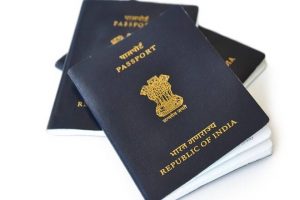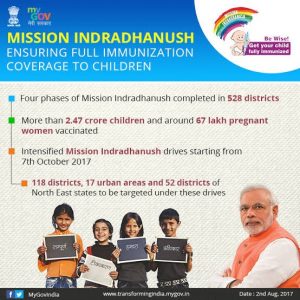Today Current Affairs: 3rd December 2021 for UPSC IAS exams, State PSC exams, SSC CGL, State SSC, RRB, Railways, Banking Exam & IBPS, etc
Table of Contents
Renunciation Of Indian Citizenship:

More than six lakh Indians renounced citizenship in the past five years, the Ministry of Home Affairs (MHA) informed the Lok Sabha.
- The reason for a large number of Indians surrendering their citizenship was not stated in the reply.
The citizenship act, 1955 prescribes three ways of losing citizenship:
By renunciation:
- Any citizen of India of full age and capacity can make a declaration renouncing Indian citizenship
- Such a declaration may not be accepted during war.
- Even the minor children of the person who renounces citizenship stands to lose their Indian citizenship. However, when their children attain the age of eighteen, he may resume Indian citizenship.
By termination:
- If a citizen of India voluntarily acquires the citizenship of another country, then he loses the citizenship of India However, this provision does not apply during times of war.
By deprivation:
Compulsory termination of Indian citizenship by the Central government, in the following conditions:
- Obtained the citizenship by fraud.
- Citizen has shown disloyalty to the Constitution of India.
- Citizen has unlawfully traded or communicated during the times of war.
- Within 5 years of naturalization, the said citizen is imprisoned for a term of two years.
- Citizen has been ordinarily resident out of India for a period of 7 years.
Mission Indradhanush (IMI) 3.0:

Two rounds of Intensified Mission Indradhanush (IMI) 3.0 of 15 days’ duration were conducted recently, to reach out to the pregnant women and children who missed vaccination under routine immunisation programmes in 250 districts across 29 states/UTs.
- During Intensified Mission Indradhanush (IMI) 3.0 around 9.5 lakh children and 2.2 lakh pregnant women were vaccinated.
Various States and UTs have started implementation of the Intensified Mission Indradhanush 3.0.
About IMI 3.0:
- It is a campaign aimed to reach those children and pregnant women who have been missed out or been left out of the Routine Immunisation Programme.
- This is aimed to accelerate the full immunisation of children and pregnant women through a mission mode intervention.
- The first phase has been rolled out from 22nd Feb. for 15 days,
- It is being conducted in pre-identified 250 districts/urban areas across 29 States/UTs in the country.
- Beneficiaries from migration areas and hard to reach areas will be targeted as they may have missed their vaccine doses during the pandemic.
- As per the guidelines released for IMI 3.0, the districts have been classified to reflect 313 low risk; 152 medium risk; and 250 high risk districts.
Mission Indradhanush:
- ‘Mission Indradhanush’ was launched by the Government of India in Decmber 2014.
- It was aimed to strengthen and re-energize the programme and achieve full immunization coverage for all children and pregnant women.
- The ultimate goal of Mission Indradhanush is to ensure full immunization with all available vaccines for children up to two years of age and pregnant women.
5G Technology:

According to the recently released ‘Ericsson Mobility Report’
- Fifth generation telecom services are likely to account for 39% of mobile subscriptions or about 500 million subscriptions in India at the end of 2027.
- The total number of smartphone subscriptions is expected to be 810 million at the end of 2021 and is projected to grow at a compounded annual growth rate of 7%, exceeding 1.2 billion by 2027.
- 4G subscriptions are expected to reduce from 68% of mobile subscriptions in 2021 to 55% in 2027 as subscribers migrate to 5G.
- 5G is the next generation of mobile broadband that will eventually replace, or at least augment 4G LTE connection.
Features and benefits of the 5G technology:
- Operate in the millimeter wave spectrum (30-300 GHz) which have the advantage of sending large amounts of data at very high speeds.
- Operate in 3 bands, namely low, mid and high frequency spectrum.
- Reduced latency will support new applications that leverage the power of 5G, the Internet of Things (IoT), and artificial intelligence.
- Increased capacity on 5G networks can minimize the impact of load spikes, like those that take place during sporting events and news events.
Parker Solar Probe:

The NASA probe recently made an extremely close encounter with the Sun. The probe was just 5.3 million miles away from the surface of our star and passed by at a ridiculous speed of 363,660 mph, making it the fastest artificial object ever created.
- Additionally, the Parker Solar Probe also broke the record for the closest satellite to survive a near pass of the Sun.
- The probe will continue to orbit and increasingly get closer to the Sun, eventually coming within 4.3 million miles from the surface at speeds above 430,000 mph.
- With each pass, the probe collects valuable data about our star and relays the information back to Earth for scientists to interpret.
- Information regarding solar wind, and the amount of dust particles in the area are two main sets of data the probe collects.
- NASA’s historic Parker Solar Probe mission will revolutionize our understanding of the sun, where changing conditions can propagate out into the solar system, affecting Earth and other worlds.
- Parker Solar Probe will travel through the sun’s atmosphere, closer to the surface than any spacecraft before it, facing brutal heat and radiation conditions — and ultimately providing humanity with the closest-ever observations of a star.
- In order to unlock the mysteries of the sun’s atmosphere, Parker Solar Probe will use Venus’ gravity during seven flybys over nearly seven years to gradually bring its orbit closer to the sun.
- The spacecraft will fly through the sun’s atmosphere as close as 3.9 million miles to our star’s surface, well within the orbit of Mercury and more than seven times closer than any spacecraft has come before.
Assisted Reproductive Technology (Regulation) Bill, 2021:

The Lok Sabha has passed the Assisted Reproductive Technology (Regulation) Bill, 2021.
- The bill has excluded live-in couples, single men and the LGBTQ community.
- The Government had been working on the bill to regulate the ART industry since 2008 when it was first drafted by the Indian Council of Medical Research (ICMR).
- The bill was first introduced in Lok Sabha in 2020 but the House had referred it to a standing committee.
About the Bill:
National Registry and Registration Authority:
- The bill proposes the establishment of a national registry and registration authority for all clinics and medical professionals serving in the field.
- It will help in maintaining a database of all clinics and medical professionals serving in the field.
- State governments will appoint registration authorities for facilitating the registration process.
- The registration will be valid for five years and can be renewed for a further five years.
Regulate ART Services:
- It seeks to regulate and supervise Assisted Reproductive Technology (ART) clinics and ART banks, prevent misuse, adopt safe and ethical practice and so on.
National Board:
- The bill proposes the constitution of a national board.
- The board will set minimum standards of physical infrastructure, laboratory, diagnostic equipment and expert manpower to be employed by clinics and banks.
G20 ‘Troika’:

India joined the G20 ‘Troika’ and with this India has started the procedure for taking over the G20 presidency next year.
- ‘Troika’ refers to the top grouping within the G20 that consists of the current, previous and the incoming presidencies — Indonesia, Italy and India.
- As a Troika member, India will work closely with Indonesia and Italy to ensure consistency and continuity of the G20’s agenda.
- India will assume the G20 presidency on 1st December 2022 from Indonesia, and will convene the G20 Leaders’ Summit for the first time in India in 2023.
- Italy hosted the G20 summit during October 30-31, 2021 where India had raised the issue of Afghanistan’s future following the takeover by the Taliban.
- Indonesia took over the G20 presidency from 1st December, 2021 and in the coming months, Indonesia will hold rounds of discussion at various levels among the members of the G20 before convening the G20 Leaders’ Summit scheduled for October 30-31, 2022.
- Next year’s summit will be organised along the overall theme of “Recover Together, Recover Stronger”.
G20:
- It is an informal group of 19 countries and the European Union (EU), with representatives of the International Monetary Fund and the World Bank.
- It does not have a permanent secretariat or Headquarters.
- The membership comprises a mix of the world’s largest advanced and emerging economies, representing about two-thirds of the world’s population, 85% of global Gross Domestic Product (GDP), 80% of global investment and over 75% of global trade.
- Members: Argentina, Australia, Brazil, Canada, China, France, Germany, India, Indonesia, Italy, Japan, Republic of Korea, Mexico, Russia, Saudi Arabia, South Africa, Turkey, the United Kingdom, the United States and the EU.
Global Gateway Plan: EU

The European Commission has announced a plan, called Global Gateway, to mobilise EURO 300 billion by 2027 in public and private infrastructure investment around the world.
- Although the plan doesn’t mention China, it is seen as a response to China’s Belt and Road strategy.
About Global Gateway Plan:
- Developmental Dimensions: With Global Gateway, the EU, in a Team Europe approach, will offer its partners a response to the urgent needs:
- To develop sustainable and high quality digital, climate and energy and transport infrastructures.
Strengthen health, education and research systems across the world.
- To develop sustainable and high quality digital, climate and energy and transport infrastructures.
- Funding: To finance the project, the EU will use its European Fund for Sustainable Development Plus.
- Under this, 40 billion euros are made available in guarantee capacity, and will offer grants of up to 18 billion euros from external assistance programs.
- The plan will need funding from international institutions and from the private sector if it is to get anywhere near its target.
- The financing will be done under fair and favorable terms in order to limit the risk of debt distress.
- Offshoot of B3W Project: The EU strategy is an offshoot of the Build Back Better World (B3W) Initiative.
- B3W is an international infrastructure investment initiative announced by the Group of Seven (G-7) richest democracies in June 2021.
Ujjwala Scheme:

The Pradhan Mantri Ujjwala Yojana saw a spurt in new distribution just before the 2019 general election as per RTI (Right To Information) plea.
- The target under the scheme was to release 8 crore LPG connections to the deprived household by 2020. This was achieved in August 2019, seven months ahead of the March 2020 deadline.
- In August 2021, the Prime Minister launched the second phase of Pradhan Mantri Ujjwala Yojana (PMUY) or Ujjwala 2.0 Scheme.
- PMUY-I:
- Launched in May 2016 to provide LPG (liquefied petroleum gas) connections to poor households.
- PMUY-II:
- It is aimed to provide maximum benefit to the migrants who live in other states and find it difficult to submit address proof.
- Now they will only have to give “Self Declaration” to avail the benefit.
- Objectives:
- Empowering women and protecting their health.
- Reducing the number of deaths in India due to unclean cooking fuel.
- Preventing young children from a significant number of acute respiratory illnesses caused due to indoor air pollution by burning fossil fuel.
- Features:
- The scheme provides a financial support of Rs 1600 for each LPG connection to the BPL households.
- Along with a deposit-free LPG connection, Ujjwala 2.0 will provide the first refill and a hotplate free of cost to the beneficiaries.
- Target:
- Under Ujjwala 1.0, the target was to provide LPG connections to 50 million women from the Below Poverty Line (BPL) households, by March 2020. However, in August 2018, women from seven other categories were brought under the purview of the scheme:
- SC/ST, those under the Pradhan Mantri Awas Yojana (PMAY), beneficiaries of the Antyoday Anna Yojana (AAY), Forest Dwellers, most backward classes, tea gardens and Islands.
- Under Ujjwala 2.0, an a dditional 10 million LPG connections will be provided to the beneficiaries.
- Government has also fixed a target of providing piped gas to 21 lakh homes in 50 districts.
- Nodal Ministry:
- Ministry of Petroleum and Natural Gas (MoPNG).
Cryptocurrency:

A relatively lesser known cryptocurrency token named after the Greek letter Omicron saw its price surge more than 10 times in a matter of two days outperforming top digital currencies like Bitcoin and Ethereum, soon after the World Health Organization (WHO) named the latest Covid-19 variant of concern Omicron.
- From Friday to Monday morning, the price of Omicron surged to $688 from less than $70 earlier.
- Little is known about this decentralized finance project, and robust data surrounding the project is proving hard to come by. Omicron’s official website describes itself as a “decentralized currency protocol built on Arbitrum”.
- A similar surge in prices was also witnessed with the crypto token SQUID following the popularity of Netflix show Squid Game despite there being no relation between the show and the currency.
- The WHO is following the Greek alphabet to name significant Covid-19 variants, and the next Greek letter Pi also has a cryptocurrency named after it.




